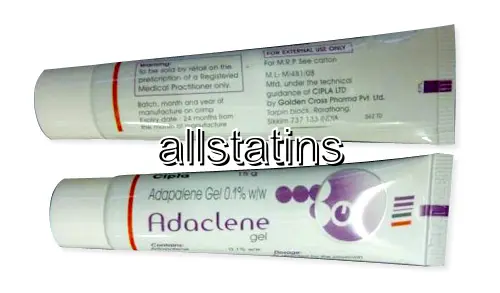Buy Adapalene Online in New Zealand | All Statins New Zealand
| Package | Dosage | Price | Price per Dose | |
|---|---|---|---|---|
| Dosage: 15g | ||||
| 20 tube | 15g | NZD1,291.57 | NZD64.58 | |
| 15 tube | 15g | NZD1,043.78 | NZD69.60 | |
| 10 tube | 15g | NZD774.31 | NZD77.46 | |
| 5 tube | 15g | NZD452.18 | NZD90.16 | |

Adapalene Description
Introduction to Adapalene
Adapalene is a topical medication commonly used in the treatment of acne. It belongs to a class of drugs known as retinoids, which are derivatives of vitamin A. This medication helps to regulate the growth and shedding of skin cells, preventing pores from becoming clogged and reducing the formation of acne lesions. Adapalene is available by prescription and over-the-counter in various formulations, making it accessible for many patients seeking effective skincare solutions.
How Adapalene Works
Adapalene works primarily by modulating the activity of skin cell growth and differentiation. It promotes normal keratinization, which helps prevent the accumulation of dead skin cells inside hair follicles. By doing so, it reduces the formation of comedones—blackheads and whiteheads—which are the first signs of acne. Additionally, adapalene has anti-inflammatory properties that help reduce redness and swelling associated with inflammatory acne lesions. This dual action makes it a powerful agent in managing mild to moderate acne outbreaks.
Benefits of Using Adapalene
Many users report significant improvements in their skin after consistent use of adapalene. It is particularly effective in preventing new acne from forming, thus improving the overall appearance of the skin over time. Its anti-inflammatory effects also help diminish redness and irritation often associated with acne. Another advantage is its relatively favorable safety profile compared to other retinoids, since it tends to cause less photosensitivity. Regular application can lead to clearer skin, boost confidence, and reduce the need for more aggressive treatments.
Possible Side Effects
While adapalene is generally well tolerated, some users may experience mild side effects, especially when starting treatment. Common issues include skin dryness, peeling, redness, and mild stinging or burning sensations. These effects usually diminish as the skin adapts to the medication. Less common but more serious side effects include increased sensitivity to sunlight, which means users should use sun protection diligently. Allergic reactions are rare but may manifest as swelling, rash, or severe irritation. It is essential to monitor your skin's response and consult a healthcare provider if adverse reactions persist or worsen.
Usage Instructions and Precautions
For optimal results, it is important to use adapalene precisely as directed by a healthcare professional. Typically, it is applied once daily, preferably in the evening, to clean, dry skin. Users should avoid applying it on broken or irritated skin. Since adapalene can increase photosensitivity, applying a broad-spectrum sunscreen and limiting sun exposure during treatment are recommended. It is also advisable to avoid using other irritating products, such as harsh cleansers or astringents. Pregnant or breastfeeding women should consult their healthcare provider before starting treatment, as safety during pregnancy has not been fully established.
Summary and Final Thoughts
Adapalene is a well-established medication that offers effective management of acne with a relatively low risk profile. Its ability to control abnormal skin cell growth and reduce inflammation makes it popular among dermatologists and patients alike. Proper usage and consistent application are key to achieving the desired results. While mild side effects are common, they tend to decrease over time. Overall, adapalene remains a reliable choice for individuals seeking a dermatology-focused treatment for acne without the more aggressive side effects associated with some other retinoids.
